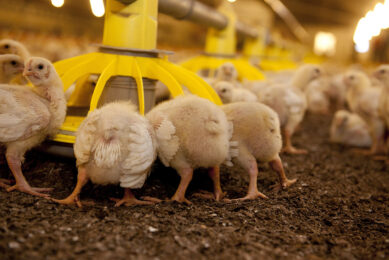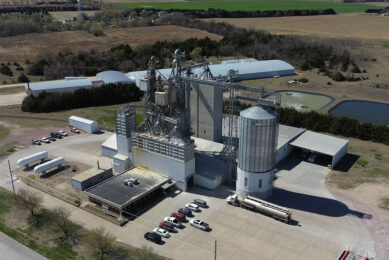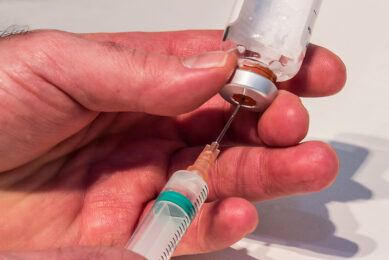Poultry feed formulation in an antibiotic free era
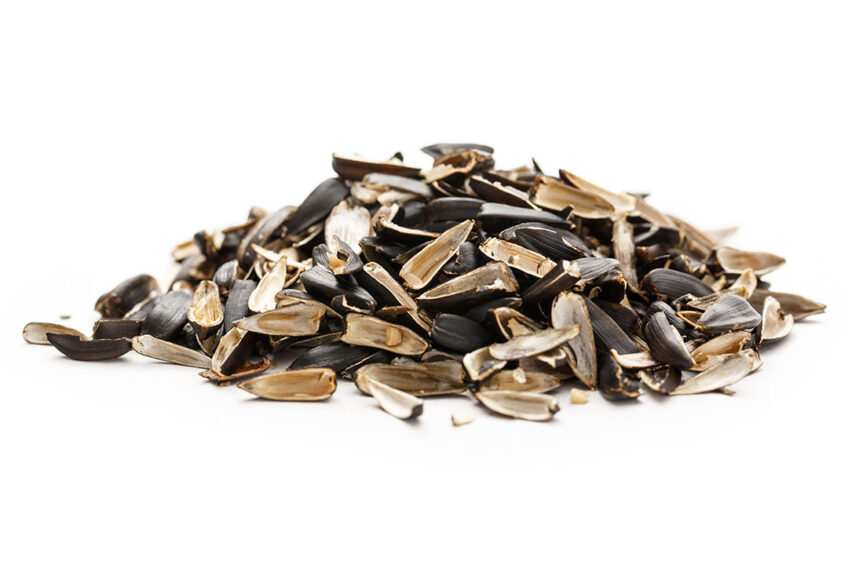
Nowadays, our livestock can be seen as Olympic athletes and the question is how to keep high productive livestock healthy. Feed plays a major role in the well-being of animals and in the reduction of antibiotic use.
The use of antibiotic growth promoters (AGPs) in animal feed, banned in the EU since 2006, has a positive effect on production performance. Mainly feed efficiency (feed conversion ratio or FCR) is improved.
Since AGPs have little or no effect in germ-free animals, the presence of intestinal microflora must play a role in the mode of action of AGPs.
Microbes in the gastro-intestinal tract (GIT) have advantages such as in the development of the immune system, protection against pathogenic microbes, provision of nutritional compounds from fermentation such as volatile fatty acids and in the stimulation of host defence, but they have disadvantages as well such as competition with the host for nutrients like protein, being potentially pathogenic, deconjugation of bile salts, which is important when it comes to the digestion of fats, production of toxic compounds and finally, the stimulation of the immune system has also a price.
Mode of action of AGPs
The use of AGPs in animal feed results in a reduction of the overall number of microbes and/or bacterial species in the gut. It reduces the amount of potential pathogenic microbes and the production of harmful metabolites that depress growth. Furthermore, competition with the host for nutrients and metabolic costs of the immune system is reduced as well. As indirect effects, a thinner gut wall and lower endogenous losses are observed.
In an antibiotic free era, as we have in the EU since the ban of AGPs in 2006, microbial growth in the GIT has increased with a higher use of nutrients (at the expense of the host), more deconjugation of bile salt and more fermentation of carbohydrates and undigested protein as consequences. Furthermore, villi length and feed intake are also reduced. Hence, poultry feed formulations need to be modified to counteract these side-effects..
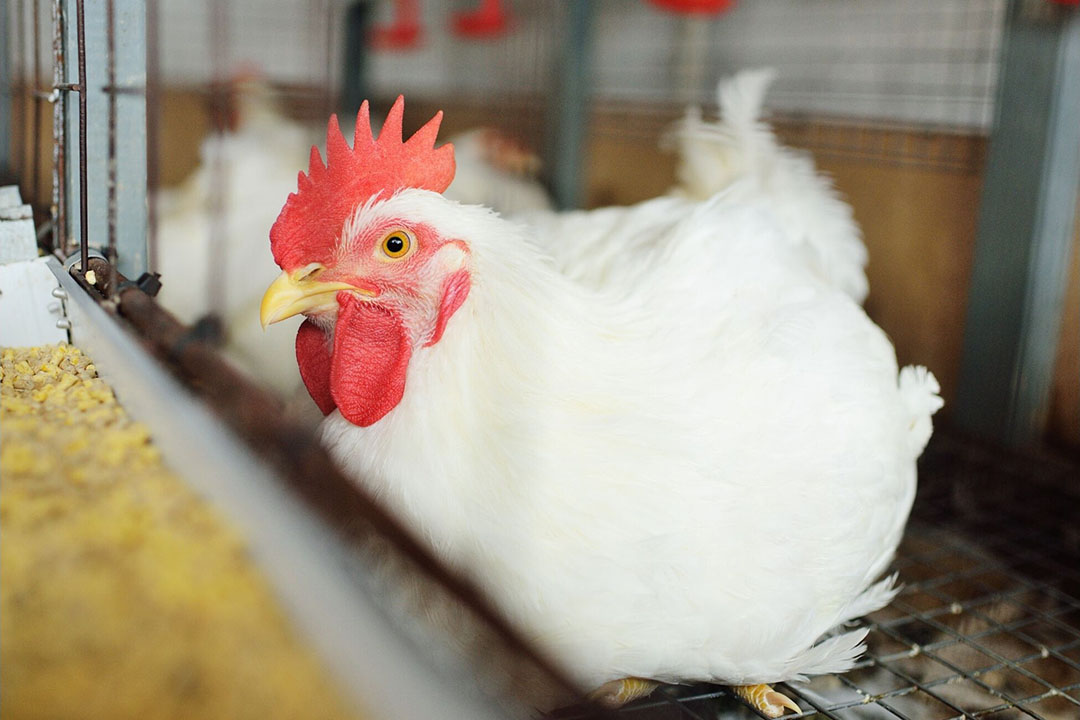
Fat digestion
Bile salts are needed for the emulsification of dietary fat before it can be digested and absorbed. Due to the bile salt deconjugation by microbes, less dietary fat is emulsified, digested and absorbed, especially in the case of more saturated fats and oils as animal fat and palm oil in the diet. Coconut and palm kernel oil with shorter fatty acids (C12 and C14) or vegetable oils with more unsaturated fatty acids (C18:1, C18:2 and C18:3) are easier digested and absorbed. So, these fat sources are preferred in an AGP free poultry diet.
Fermentability of fibre sources
More microbes in the gut also means more fermentation of carbohydrates and fibres. Fermentation of fibre sources can vary. Inert fibre sources as oat hulls, straw, wheat bran, rice hulls and sunflower hulls are less fermentable than more fermentable fibre sources as soybean hulls, citrus pulp, and sugar beet pulp.
Poultry seems to prefer more inert or insoluble fibre instead of more fermentable or soluble fibre. SFR performed a desk study based on data from studies of Jiménez-Moreno et al. published between 2011 and 2019. Correlations were found between dietary ADF, body weight gain (BWG) and FCR parameters (Figure 1 and Figure 2). A minimum of 40 g/kg ADF can be recommended for broilers. Since an increase of soluble dietary fibre (s_DF) resulted in a higher water to feed ratio (Figure 3), a maximum of 25 g/kg s_DF can be recommended. Finally, an increase of insoluble dietary fibre (i_DF) stimulated the relative gizzard weight (Figure 4) and reduced the gizzard pH (Figure 5). From these observations, a minimum of 65 g/kg i_DF can be recommended.
Figure 1 – Relation between dietary ADF (g/kg) and body weight gain (BWG) day 0–18 (g).
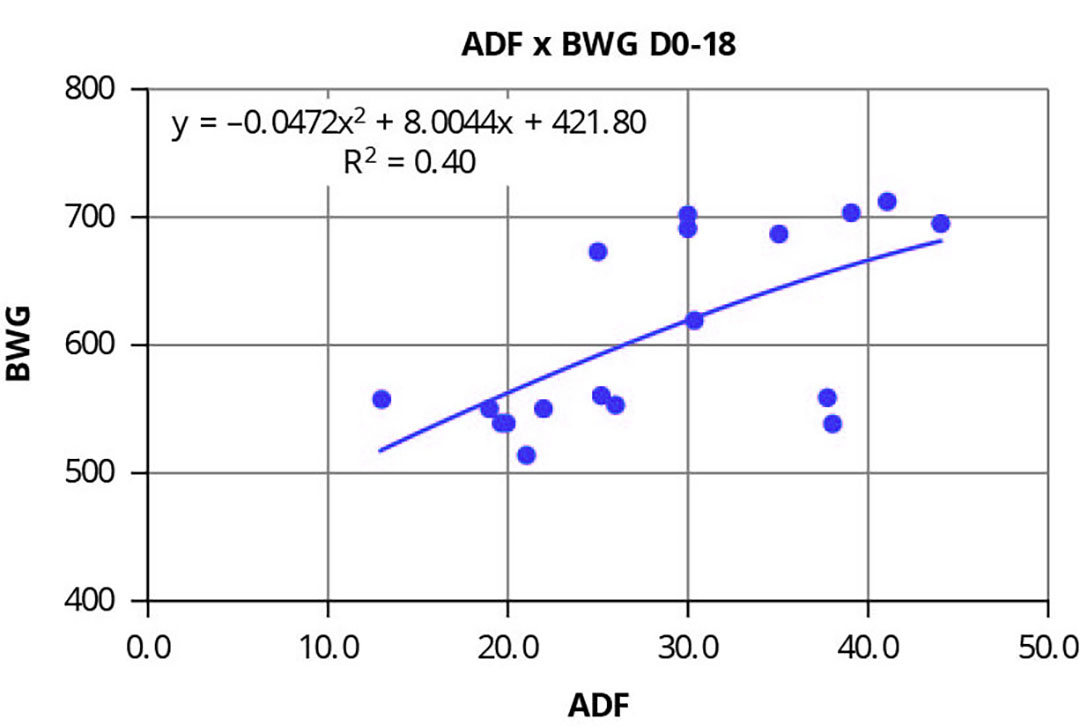
Figure 2 – Relation between dietary ADF (g/kg) and feed conversion ratio (FCR) day 0-18 (g/g).
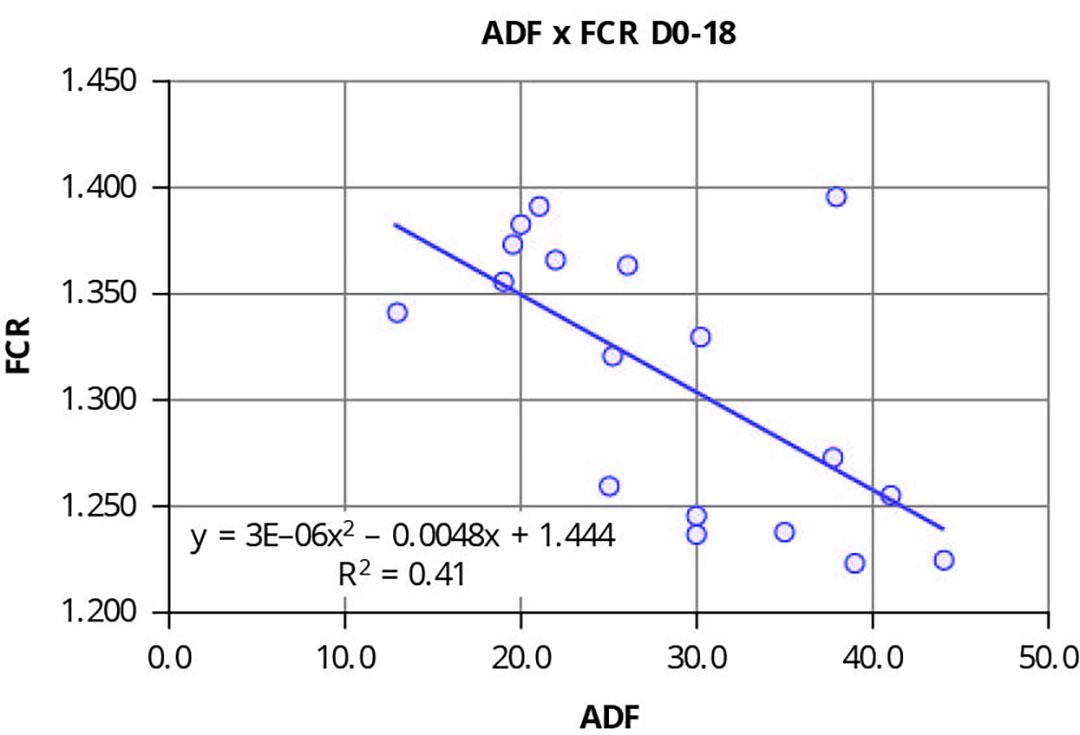
Figure 3 – Relation between soluble dietary fibre (g/kg) and water to feed (W/F) ratio day 16-18.
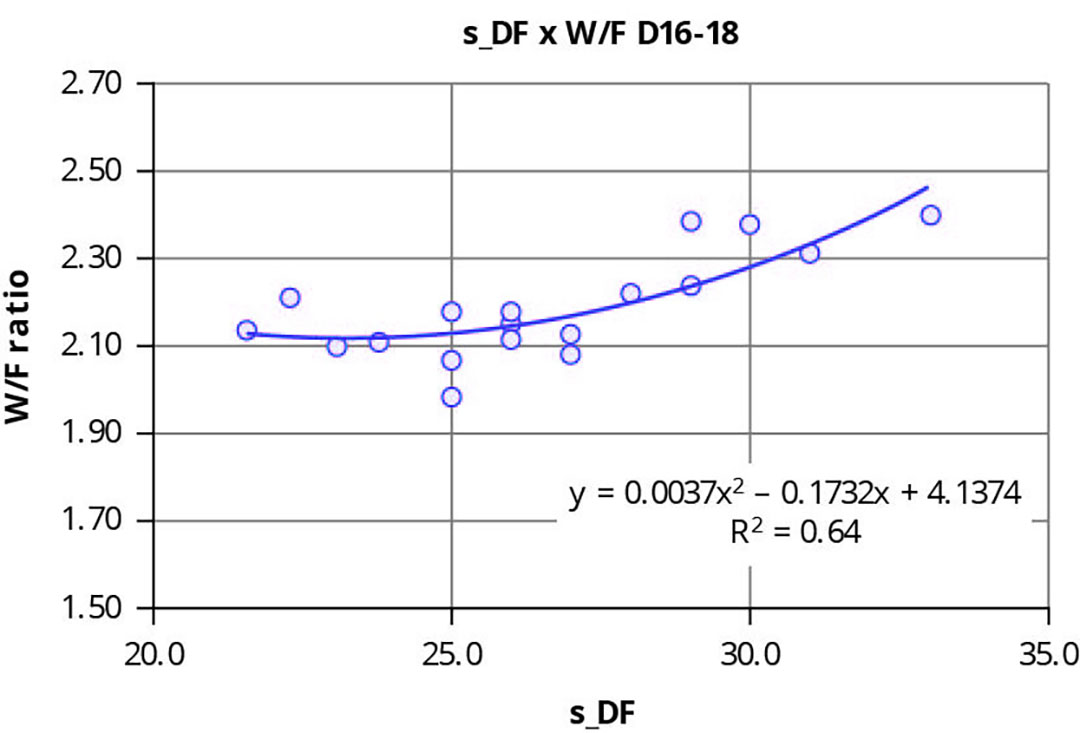
Figure 4 – Relation between insoluble dietary fibre (g/kg) and relative gizzard weight (g/kg BW).
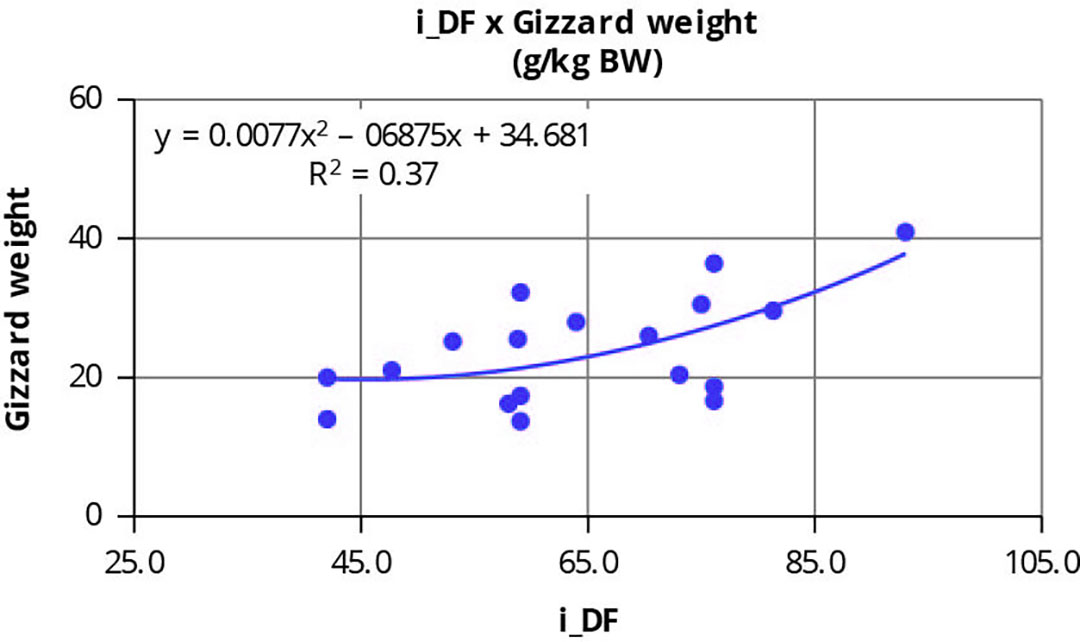
Figure 5- Relation between insoluble dietary fibre (g/kg) and gizzard pH.
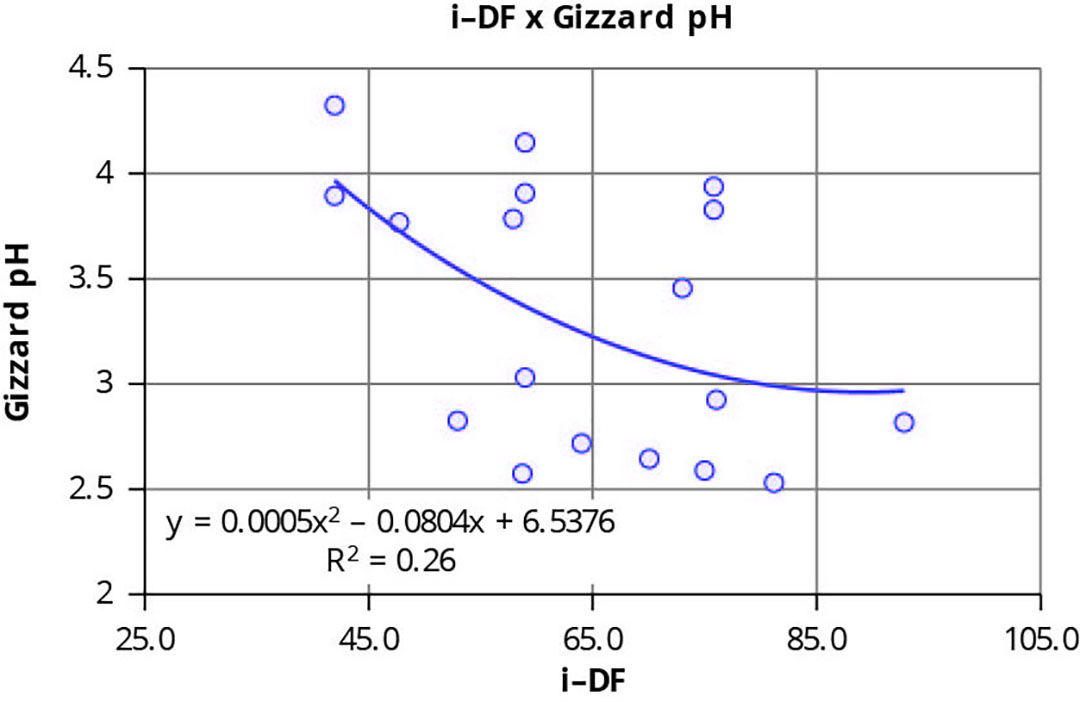
Protein digestion
More microbes in the gut also results in more fermentation of undigested protein and production of toxic metabolites such as biogenic amines and ammonia. Intestinal mucus production and endogenous losses are increased as well. To counteract this phenomenon, we need to use protein sources with a higher digestibility so that the dietary crude protein (CP) level can be lowered. Consequently, also more synthetic amino acids will be used. This will help to reduce N excretion and incidence of wet litter as well. A study of Belloir et al. (2015) shows that CP level can be lowered down to 17% in broilers from day 21 onwards without affecting FCR (Figure 6).
Figure 6 – Relation between dietary CP (%), FCR d21-35 and ADG (g/d) d21-35 (Belloir et al., 2015).
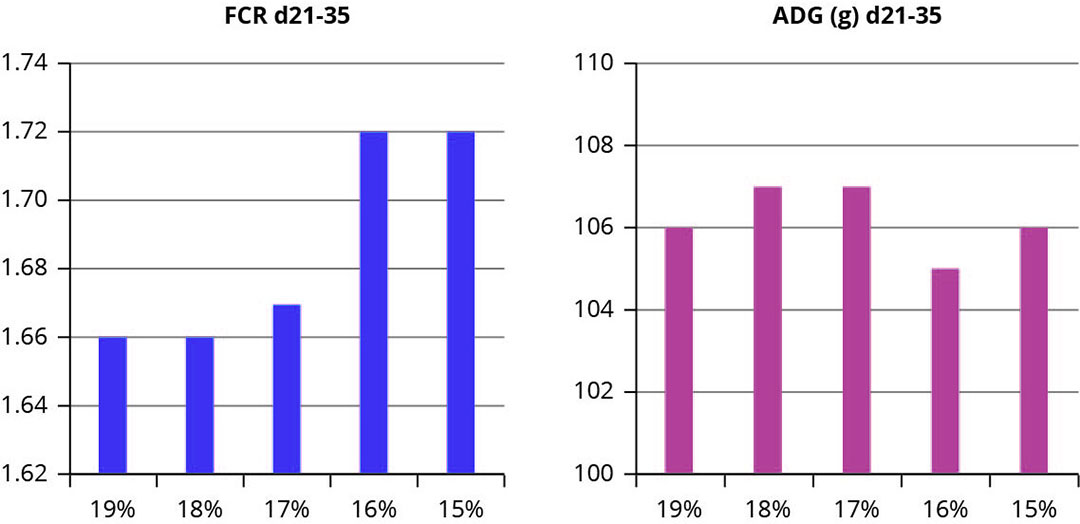
Potential feed additives
A lot of feed additives that can be used in animal feed (as a partial replacer of AGPs) are available nowadays, such as acidifiers (organic acids, SCFA, MCFA), amino acids, emulsifiers, enzymes, mycotoxin binders and/or detoxifiers, organic minerals, plant extracts, probiotics and prebiotics.
Points to consider
The following six points can be considered for a poultry feed formulation in an antibiotic free era:
- Reduce gut viscosity in wheat/barley/oats/triticale-based diets by using NSP-degrading enzymes (xylanase, beta-glucanase, …)
- Use good digestible fat sources that are rich in MCFA (coconut oil or fatty acids, palm kernel oil or fatty acids, insect oil) or high in U/S ratio (C18:1+C18:2+C18:3)/(C16:0+C18:0)
- Use inert fibre sources and avoid too much fermentable fibre sources by implementing a minimum level of ADF or insoluble dietary fibre and a maximum level of soluble dietary fibre in the diets
- Use coarsely ground cereals before pelleting or add whole wheat to the pellet after pelleting to aid gizzard development
- Reduce the amount of indigestible protein and lower the dietary crude protein level by using good digestible protein sources, more synthetic amino acids and phytase that also improves ileal amino acid digestibility
- Use additives as potential alternatives for AGPs that have one of the following actions:
a. Antimicrobial, such as ionophore coccidiostats, MCFAs, resins of pine trees, …
b. Anti-inflammatory/anti-oxidative, such as plant extracts, polyphenols, vitamins A/E/C, …
c. Gut integrity supporting, such as betaine, coated/esterified butyric acid, mycotoxin binders/detoxifiers.
This article is a summary of the presentation held during the Virtual All About Feed Forum in May 2021 organised by Misset.





